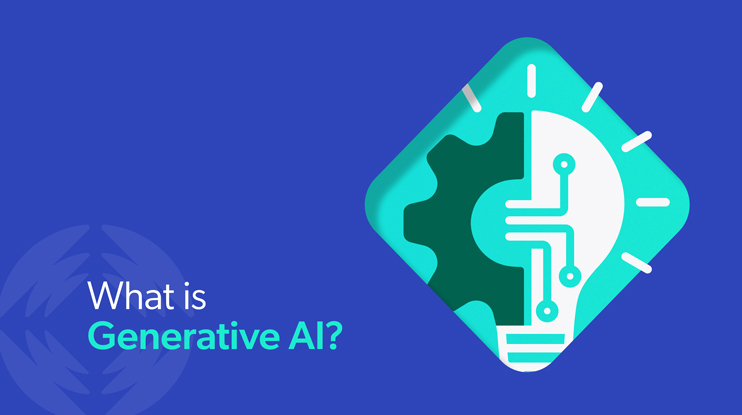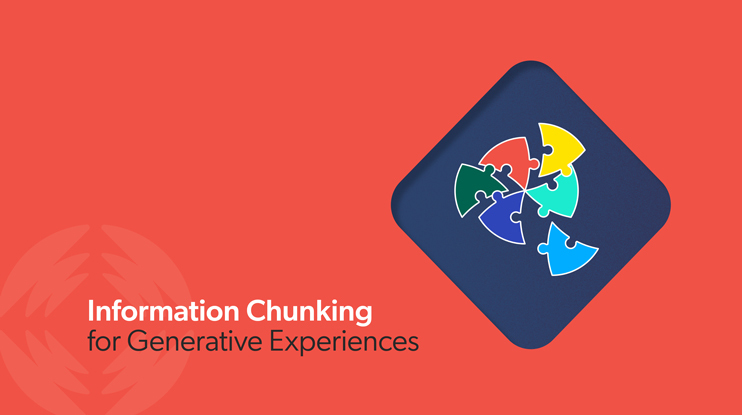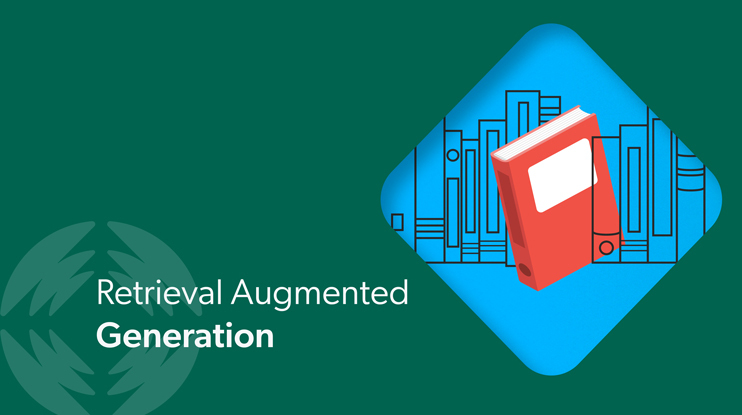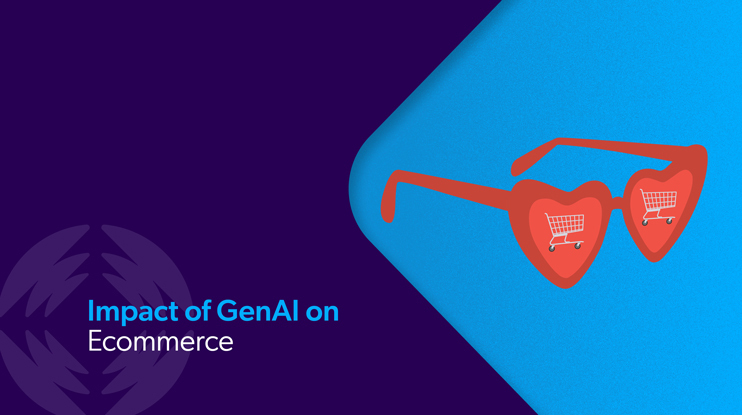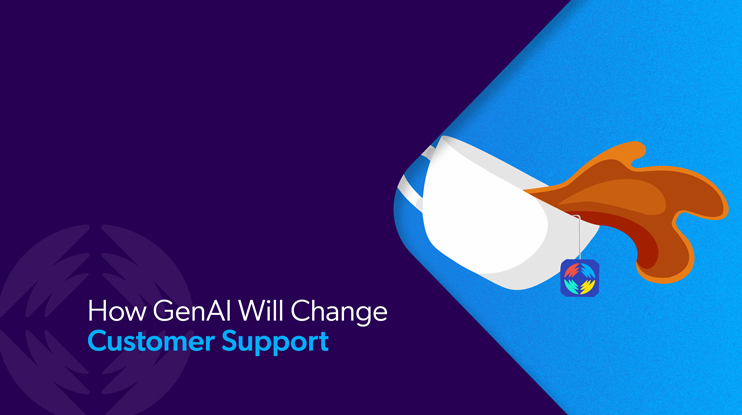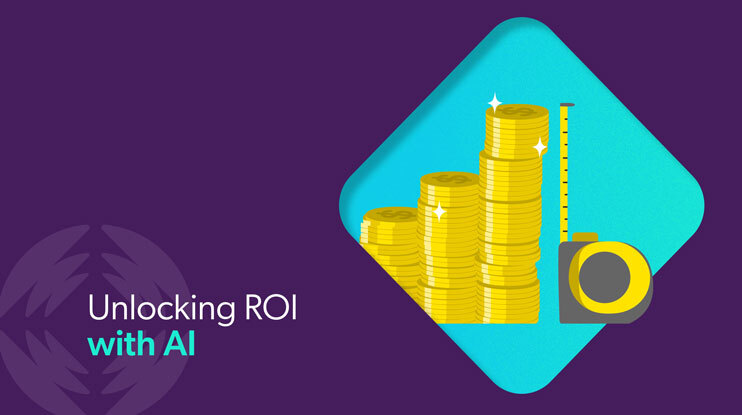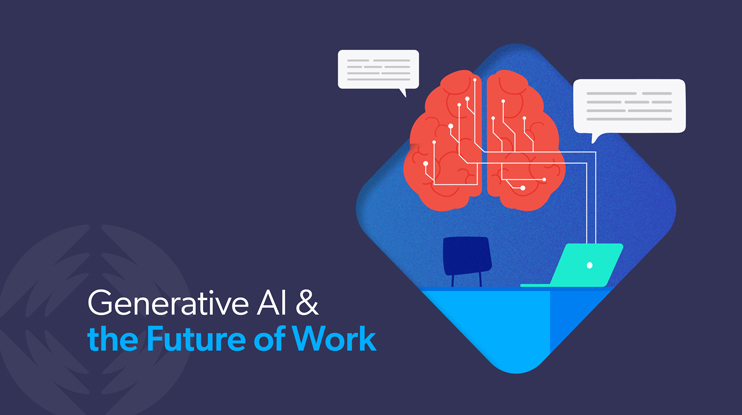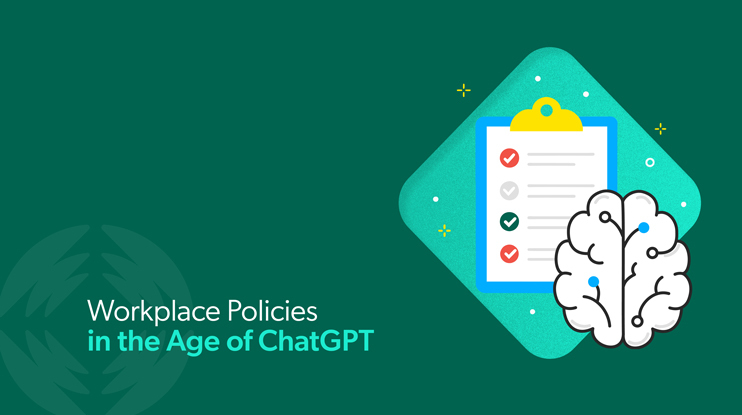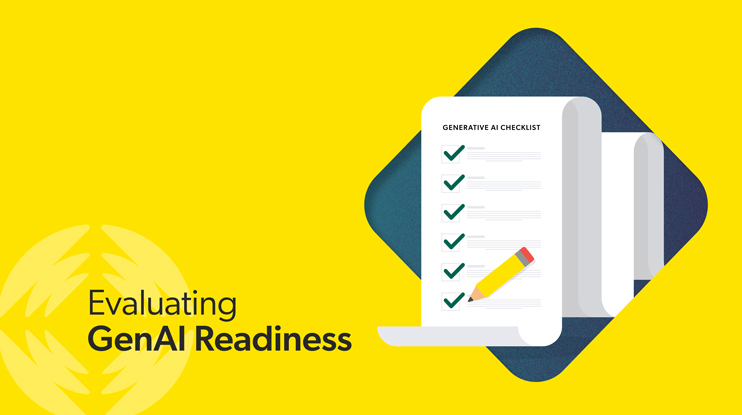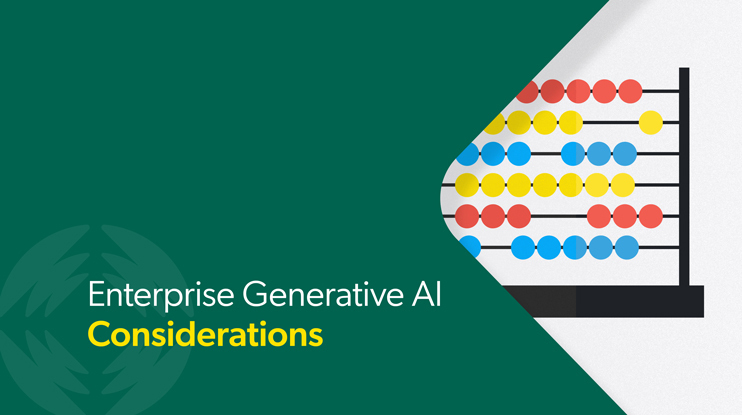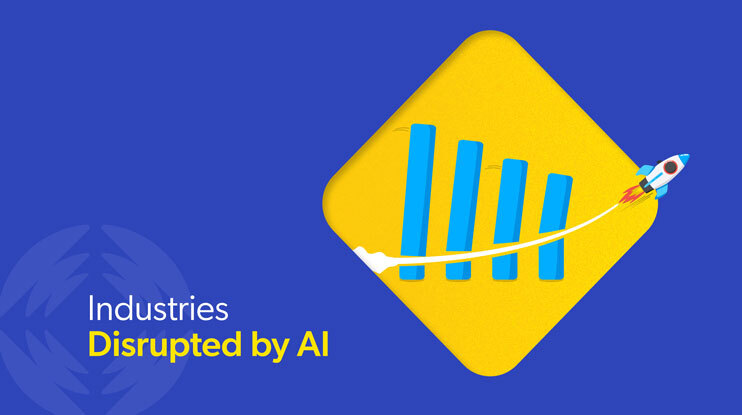In a zeal to streamline and improve processes, leadership across all industries is investing in AI technology. Google CEO Sundar Pichai proclaimed AI as being bigger than fire back in 2021, and he’s not alone. Many CEOs and tech luminaries have equated the “AI revolution” to the early days of the internet in terms of its impact on society.
Now a ubiquitous news topic, AI is becoming a source of excitement and anxiety with business leaders. Two of the top applications for AI — generative AI (also called “gen AI” and GenAI) and predictive AI — are being incorporated into everything from workforce training tools to protein synthesis.
AI may be the best invention since fire, but which type of tool do you really need to pay attention to? It’s important to take a step back and understand how top applications like generative AI and predictive AI differ — and how they may impact your business.
Relevant reading: GenAI & 10 AI Models Transforming EX + CX
Machine Learning vs. Artificial Intelligence
Artificial intelligence (AI) and machine learning (ML) are used so frequently to describe generative and predictive AI, it’s often assumed they mean the same thing. While they’re closely related AI technology, there are clear differences.
A Brief Description of AI
AI is an overarching category. It’s what we mean when we say machines use human-like intelligence to solve problems and make accurate predictions. ML, deep learning, and neural networks are subsets of AI. Each of these subsets plays a role in making generative and predictive AI models work.
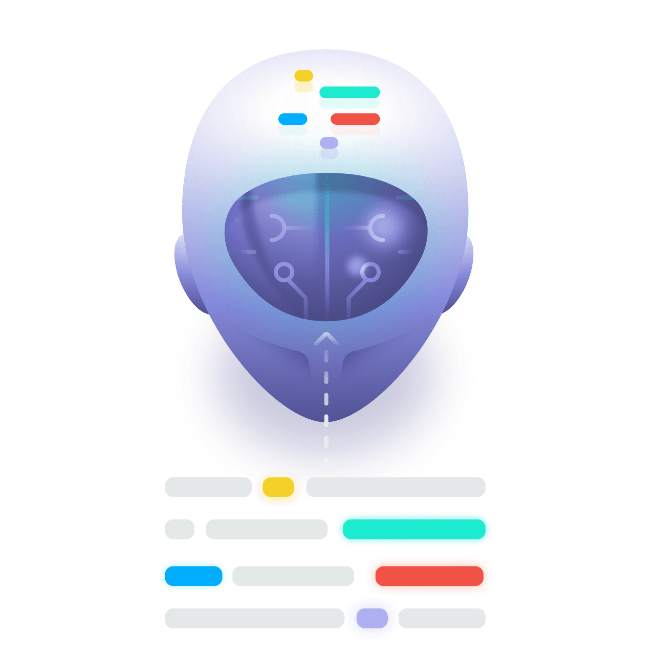
Here’s a breakdown of four important terms that can help you understand how each subset of AI is connected:
- Artificial intelligence: The broadest classification of intelligent computing, AI tends to be a catchall term for machines being able to mimic or emulate human intelligence. AI uses training data, mathematical formulas, and AI algorithms to achieve this.
- Machine learning: A subset of AI, ML uses neural networks and deep learning to enable an application to autonomously learn and improve. ML systems don’t need to be explicitly programmed. Instead, these systems are “trained” with large datasets and use mathematical models which “teach” the system to learn, make decisions, and improve without human direction.
- Deep learning: Deep learning is a subset of ML that uses artificial neural networks with multiple layers to mimic the human brain, an approach that enables ML systems to model and understand complex datasets. The ability to handle such complexity, often found in large volumes of unstructured training data, differentiates deep learning from other ML techniques. Examples of deep learning applications include image recognition, natural language processing (NLP), and speech recognition.
- Neural networks: Deep learning can’t exist without neural networks, which are inspired by the way human brains work. Neural networks are made from interconnected layers of neurons called “nodes” that enable the system to adjust its internal parameters (weights and biases) in a process known as “backpropagation.” Essentially, it can learn from its mistakes and minimize future errors.
Think of each of the above AI categories as connected but separate, starting with AI at the top and neural networks at the bottom. They each represent a nuanced AI technology with the potential to help businesses leverage AI effectively for data science, digital marketing, web development, and making informed decisions based on existing and synthetic data.
What Is Predictive AI?
Predictive AI, a subset of predictive analytics, uses statistical algorithms and ML to forecast trends, behavior, patterns, and predictions from large data sources. Many businesses are already using predictive analytics — a technology that relies on historical data — to predict future outcomes in various areas of their operations and make informed decisions based on existing data.
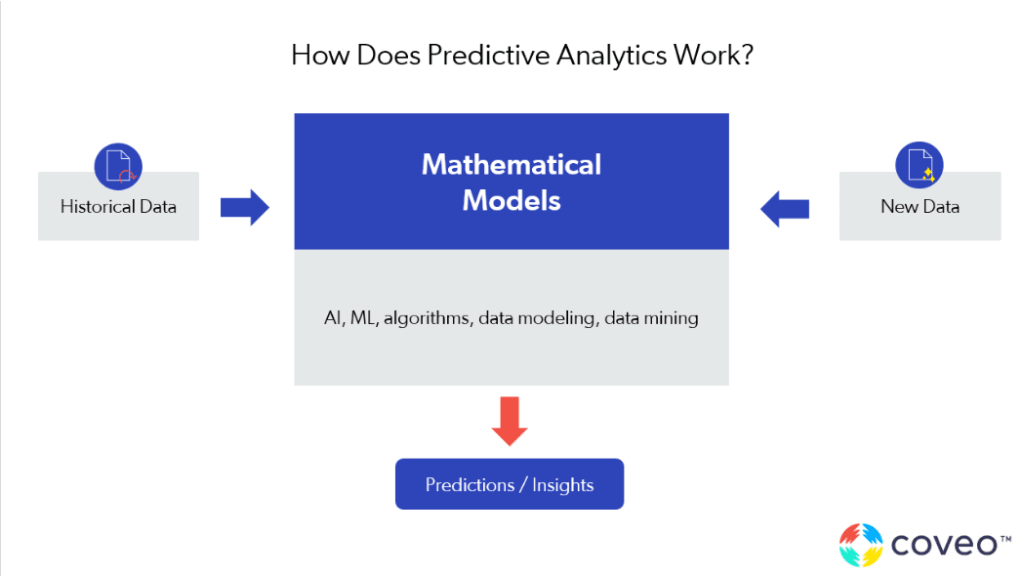
While extremely helpful, predictive analytics can fall short when it comes to accuracy. Unexpected events (like a global pandemic and the resulting shifts in consumer behavior) can significantly alter patterns, thus impacting the reliability of some predictions.
Predictive AI helps solve this problem by incorporating ML algorithms into the mix. This helps adjust for real-time deviations from historical data, allowing predictive AI models to adapt and accommodate changes in market trends and consumer behavior. Predictive modeling and predictive maintenance are examples of how businesses can leverage predictive AI algorithms to improve their operations and make informed decisions about future events.
Some benefits of predictive AI include:
- Enhanced forecasting: Uses a variety of data sources to predict future trends, reducing inaccuracy and helping businesses optimize inventory, delivery times, and sales based on real-time events and behaviors. Predictive modeling plays a key role in enhanced forecasting.
- Improved experiences: Predictive AI can be used to improve online experiences like site search by providing more relevant search results (e.g., intelligent search) using a combination of historical data, user behavior, and intent to help users find information quickly. Conversational AI and digital marketing both benefit from predictive AI.
- Adaptability: In unpredictable situations like catastrophic weather events or container ships blocking global trade routes, multiple data sources combined with ML algorithms enable predictive AI to provide relevant and timely insights and predictions. This makes it much more adaptable when used to forecast real-world business issues.
- Improved inventory management: Syncing real-time data with AI helps retailers avoid overstocking and understocking. It also facilitates more effective inventory planning by helping businesses make informed decisions based on market trends.
- Delivery optimization: By analyzing accidents, traffic congestion, or severe weather, and other traffic-related issues, predictive AI algorithms help optimize delivery routes and ensure on-time deliveries. They can also provide insights on how to handle and prepare for these situations using predictive maintenance to anticipate when machinery is likely to fail and require repair.
Predictive AI Applications
Use cases for predictive AI vary depending on your business needs. Here’s a snapshot of how different companies are using this technology to achieve better business outcomes:
- Professional Services: EY has saved 250,000 hours of manual labor by implementing intelligent document automation, a form of predictive AI. Supervised learning techniques are often used in such applications.
- Food and Beverage: PepsiCo is using predictive AI for inventory management. They successfully shifted an estimated 4,300 workdays per year from routine tasks to more strategic activities.
- Travel: Amadeus uses predictive AI to process 100,000 transactions per second and reduce data fragmentation across travel stakeholders (travelers, airlines, hotels, airports, etc.) – creating better experiences for travelers and for their travel-industry clients.
- Healthcare: Johnson & Johnson used predictive AI to accelerate their COVID-19 vaccine development process by identifying optimal locations for clinical trials. This allowed them to start vaccine trials earlier.
- Ecommerce: Coveo uses AI-powered cognitive search to deliver highly relevant results and make product catalogs more searchable, improving the B2B buying process and enhancing the shopping experience.
What Is Generative AI?
Generative AI is an advanced form of ML that generates new data from scratch. It takes raw data and creates something novel but also recognizable (e.g., text, images, video). This is different from traditional AI models that typically focus on identifying patterns and making predictions.
Generative AI needs a large volume of data to work. This may include text, images, audio, or code which is fed into an AI model to undergo a training process where the model learns to recognize patterns, relationships, and nuances. Generative adversarial networks (GANs) and variational autoencoders are two popular architectures used in generative AI.
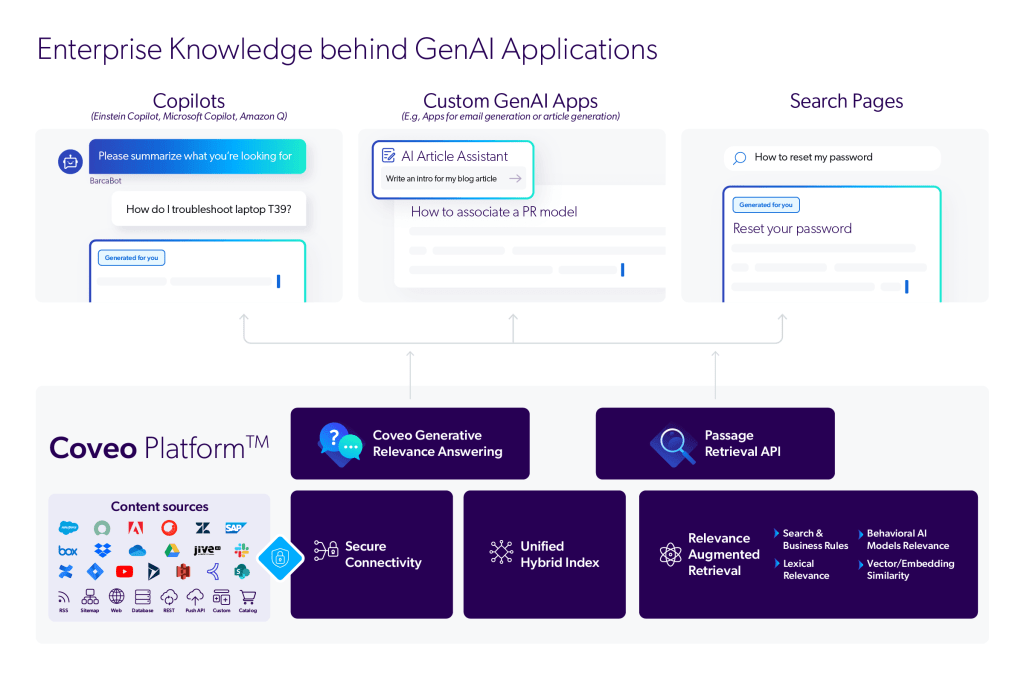
It also can suffer from hallucinations, or generating wrong data. This can be avoided if the training corpus is grounded and automatically adjusts search results. Thus, it generates the GenAI response according to the user’s search intent and context at query time while taking into account the documents to which they have access according to their individual or group permissions in a given organization. This is where supervised learning techniques and machine learning algorithms come into play to ensure the generative model produces accurate and relevant synthetic data.
Generative AI has the capacity to revolutionize industries by producing high-quality content with minimal human effort. Here are a few benefits of generative AI as noted by Gartner:
- Speeds up product development: Helps companies create new products faster by generating new ideas and designs, accelerating the process of product development.
- Enhances customer experience: Improves the customer experience by generating personalized content or relevant responses to customer inquiries. For example, conversational AI can help companies provide more timely and comprehensive customer service.
- Boosts employee productivity: Helps employees work more efficiently by automating or streamlining tasks and processes. Generative models can also assist with web development, content creation, and other time-consuming tasks.
- Supports innovation: Generates or expands ideas and solutions which can lead to new products, services, or business strategies.
- Improves business processes: Analyzes business processes and optimizes them by identifying inefficiencies and suggesting improvements.
Generative AI Applications
Unlike predictive AI, there are fewer concrete examples of how enterprise businesses are using generative AI. As a relatively new technology, companies are still exploring how it fits into the larger corporate picture. But to give you an idea of the breadth (and possibility) of uses for generative AI, here are some examples by industry:
- Automotive: Companies like General Motors use generative AI in the design process to create customized parts and vehicles more sustainably. Generative AI helps GM produce complex parts, lighter vehicles, and part-design solutions that leverage additive manufacturing processes like 3D printing.
- Ecommerce and retail: Companies like Stitch Fix, Adidas, and Hershey’s are using generative AI to create optimized product descriptions, write customer service emails, optimize images, and more.
- Health care: Companies like Microsoft and Google are integrating generative AI into tools aimed at helping healthcare professionals more easily create clinical documentation, draft automatic message responses, and answer medical questions. Startups like Glass Health are creating generative AI tools that draft clinical plans and generate differential diagnoses.
- CPG: Brands like Procter & Gamble are using generative AI to streamline marketing and communications tasks. They’re also using it to speed up the pace of product innovation and development, with generative AI being used to augment the human design and engineering process. Variational autoencoders can be used to generate new data and ideas for product development.
Regardless of your business or your industry, it’s important to do your research when choosing the best generative AI solution for your organization. It’s also helpful to develop a plan around choosing an AI tool that includes establishing a use case, considers data security, and ensures all content that’s generated is original and accurate.
Generative AI vs. Predictive AI: Two Powerful Tools
Generative AI and predictive AI – while different technologies, have the potential to collectively help companies become more agile, innovative, and efficient.
Predictive AI is like a crystal ball, helping you spot trends and plan your next move based on historical data and real-time events. On the other hand, generative AI is like an (extremely efficient) creative assistant, helping you brainstorm, craft, and expand ideas and content. It’s also a great tool for companies to gather, access, and share information — as is the case with Coveo’s intelligent search platform.
These two types of AI often join forces to become even more effective. Predictive models can give generative models a nudge in the right direction, helping them create content that’s customized and relevant. Both tools can alleviate redundant and time-consuming tasks like writing SEO-optimized descriptions for thousands of products or analyzing large volumes of existing data.
As AI apps and tools continue to be introduced into the market, we think predictive and generative AI will remain crucial to shaping the way we do business now and in the future. But keep in mind that choosing the right AI tool is contingent on your specific business goals, expectations, and needs.
Dig Deeper
For enterprise-ready and secure AI applications, we invite you to explore the benefits of AI with Coveo’s intelligent search platform . Our platform combines predictive AI and generative AI to deliver the most relevant results, improving search experiences for customers and employees.
Answering





